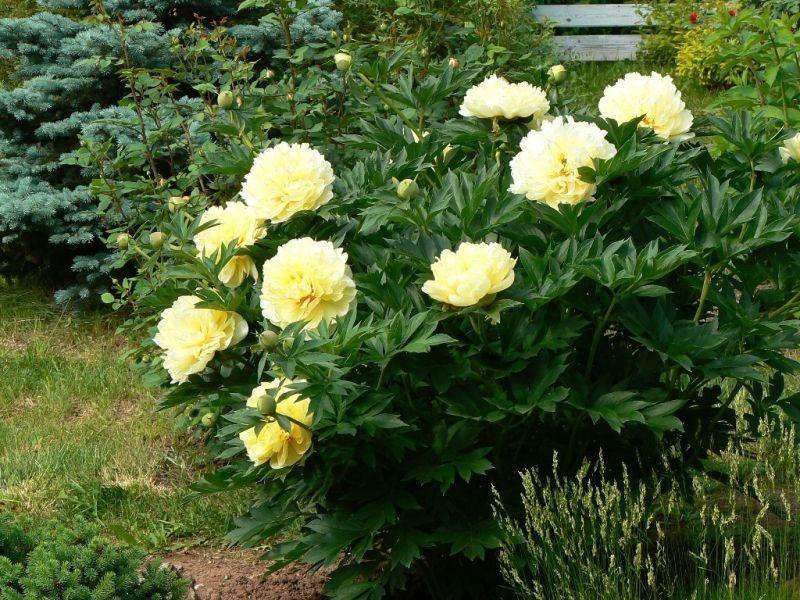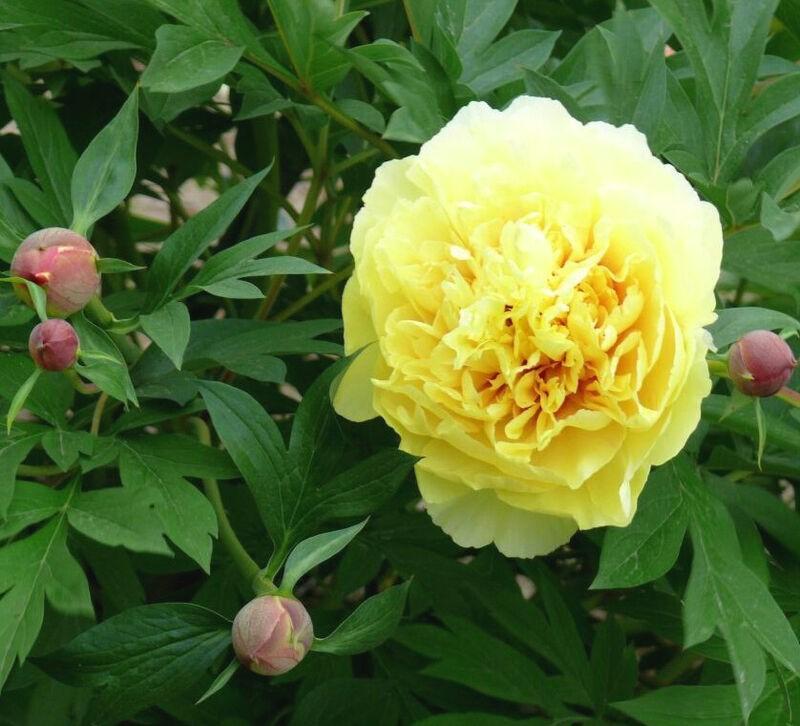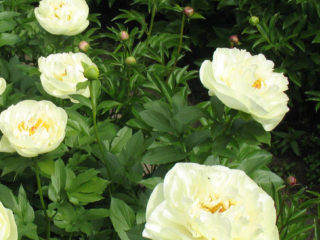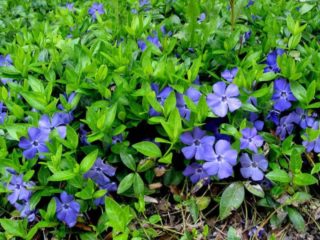Content
The Sonoma Halo peony was developed less than 20 years ago, but has already become a favorite among Russian gardeners. It produces very large flowers with a diameter of up to 20 cm. The inflorescences are lush, double, with openwork petals. The shrub tolerates frost and drought well and has good immunity. Growing such a crop is quite simple - the basic rules of planting and care are described in detail in this article.
Breeding history
The Sonoma Halo peony was introduced in the USA in 2007, but over the past few years it has spread to different countries. It is also known in Russia and is valued for its lush flowers with delicate petals. The first word in the name is associated with the city of Sonoma, which is located in the state of California.
The second part of the name "halo" means "halo". This is the name given to an optical phenomenon in the form of a glow around the moon or sun, reminiscent of a halo. Flowers look about the same - around their central part the iridescent colors look like a kind of halo.
Description of peony Sonoma Halo with photo
Peony Sonoma Halo is a perennial low-growing shrub, reaching only 80-90 cm.The flower stalks are quite strong, do not spread out too much and can withstand even strong winds. The foliage is numerous, dark green in color, quite large, creating a beautiful background.
Sonoma Halo peony flowers are very large, 15-20 cm in diameter, and belong to the terry type. They consist of numerous petals with lacy edges arranged in several rows. The shape of the inflorescence is regular, round, slightly flattened on top. The flowers look voluminous due to their terry nature.
The color of the Sonoma Halo peony flowers is yellow, with iridescence. The petals are graceful, which creates a feeling of “airiness.” In the sun, the edges fade, which only adds to the attractiveness due to the white border, which resembles a halo. The aroma is quite strong, floral, noticeable even from a distance.

Sonoma Halo flowers are large, with openwork petals
Sonoma Halo is characterized by excellent winter hardiness, which reaches -40 degrees. Therefore, even in Siberia, covering for the winter with only a small layer of mulch is sufficient.
Timing and flowering period
The Sonoma Halo peony blooms from June to July. According to this indicator, it belongs to the average varieties. Usually the buds begin to bloom in the second decade of June and end in early July. On average, the flowering period is about 2-3 weeks, which largely depends on the weather, care conditions and degree of illumination.
The shrub grows best in open areas with plenty of sunlight. At the same time, the dates may shift to earlier, up to the last ten days of May. Then flowering ends in mid-June.
Advantages and disadvantages
Peony Sonoma Halo is loved by gardeners for its large yellow flowers with a pleasant aroma.Such a shrub will decorate any garden, and the flowers can be used in bouquets, since they last a long time when cut.

The buds bloom in June
Pros:
- abundant and friendly flowering;
- very large inflorescences;
- openwork petals;
- looks good when cut;
- pleasant aroma;
- excellent winter hardiness;
- the opportunity to grow in any region of Russia;
- The bush is not spreading and takes up little space.
Minuses:
- may suffer from fungal infections;
- low bush.
When and how to plant
Like most other peonies, the Sonoma Halo variety tolerates spring planting best. The optimal time is from the last ten days of April until the end of May, when the soil warms up well and the threat of return frosts is minimal.
To properly grow the Sonoma Halo variety, several conditions must be met:
- the area should be open, preferably without shade;
- a slight elevation to avoid accumulation of water after rains, snowmelt, and irrigation;
- the soil is loose and fertile, without significant admixtures of clay, pH should be 6-7, i.e. the environment is neutral or slightly acidic.
It is advisable to start preparing the flowerbed a month before planting the Sonoma Halo peony. The soil is dug up and fertilized with organic matter (compost or humus) or complex mineral fertilizer. If the soil is very dense, add sawdust, vermiculite or sand.
The process of planting the Sonoma Halo peony is standard, the main steps are as follows:
- Mark several holes with a depth and width of 50-60 cm at intervals of 1 m or more.
- Lay a layer of pebbles, expanded clay, and small stones on the bottom.
- Seedlings are planted and sprinkled with fertile soil.
- Compact the soil to slightly (up to 5 cm) deepen the root collar.
- After this, water and mulch after a few days.
Care instructions
As already mentioned, the Sonoma Halo peony belongs to the group of ITO hybrids, so it tolerates drought, temperature and humidity changes quite well. The plant is unpretentious and needs only standard care:
- Water weekly with 1-2 buckets per adult bush. But if there is a drought, the volume should be reduced and the frequency increased to twice a week.
- Fertilizing is applied in the spring, during the formation of buds, and then 2-3 more times with an interval of 2-3 weeks. For the first time, the Sonoma Halo peony should be given nitrogen fertilizer, for example, urea. Subsequently, they are fed with complex fertilizer, alternating with organic matter. In autumn, you can pour a solution of wood ash 200 g per 10 liters.
- The soil is periodically loosened and weeds are removed if necessary.
- The bush does not need support, since the peduncles are low and quite strong.
- If necessary, remove the wilted flowers of the Sonoma Halo peony.
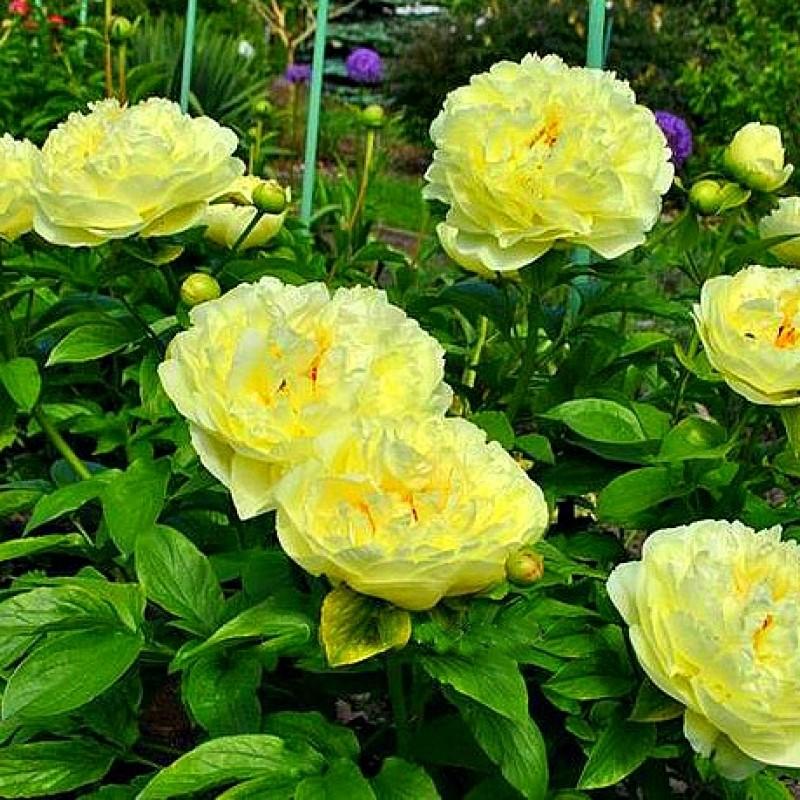
Caring for the Sonoma Halo peony comes down to regular watering and infrequent feeding
Wintering
In late autumn, before the onset of frost, the Sonoma Halo peony shrub is cut off completely, almost at the root, leaving low stumps up to 5 cm. Then it is recommended to sprinkle them with dry leaf litter, straw, hay or other materials (layer height 10-15 cm). This is quite enough to survive even the Siberian winter. In March, the shelter is removed to prevent overheating.
Reproduction methods
You can grow the Sonoma Halo peony using any vegetative method:
- dividing the bush;
- layering;
- stem cuttings.
It is better to divide adult bushes so that they do not lose their decorative effect. In early autumn, you can dig them up and cut the rhizome into several parts, sprinkling the cuts with wood ash.Then transplant to a new place at the same depth and sprinkle with mulch before the first frost.
Reproduction of the Sonoma Halo peony by layering can be planned for the spring. To do this, first dig grooves, then bend several healthy shoots and pin them. Cover with soil, leaving only the tops on the surface. During the season, they water, feed, and in the fall they are cut off from the mother bush and transplanted to a new place.
At the end of spring, another method of propagating the Sonoma Halo peony is available, such as taking cuttings. Cut young green stems 12-15 cm long, remove the leaves, make an oblique lower cut and place them in a solution of “Kornevin” or another growth stimulant overnight. Then they are planted in a fertile soil mixture, covered with a jar, which is periodically removed for ventilation and watering. In the fall, they are transplanted to a permanent place, cut flush to the ground and mulched.
Disease and pest control
The Sonoma Halo peony has fairly good immunity, but at the same time it can suffer from excessive watering, which can lead to root rot or fungal infection. For prevention, you need to give water in doses, and also carry out preventive spring treatments with fungicides, for example:
- "Fundazol";
- "Maksim";
- "Tattu";
- "Ordan".
Pests of the Sonoma Halo peony are snails and slugs. To scare them away, you can scatter mustard powder, ground red pepper, or crushed eggshells around the flowerbed. You can also use special drugs, for example, “Ulitsid”, “Thunderstorm”. Inta-Vir, Decis, Fufanon, Colorado and other insecticides are used against aphids and spider mites.
Application in landscape
Peony Sonoma Halo looks beautiful in single plantings, especially in open areas. Such a bush will decorate a lawn, a lawn, a place next to a gazebo and a bench. The main applications in garden design are:
- Composition with conifers.
- Single landing.
Conclusion
The Sonoma Halo peony produces truly beautiful double flowers that look voluminous thanks to their large size and openwork petals. It smells very nice, suitable for decorating the garden and making bouquets. Since the hybrid is unpretentious, both experienced and novice gardeners can grow it if desired.
Customer reviews about peony Sonoma Halo
